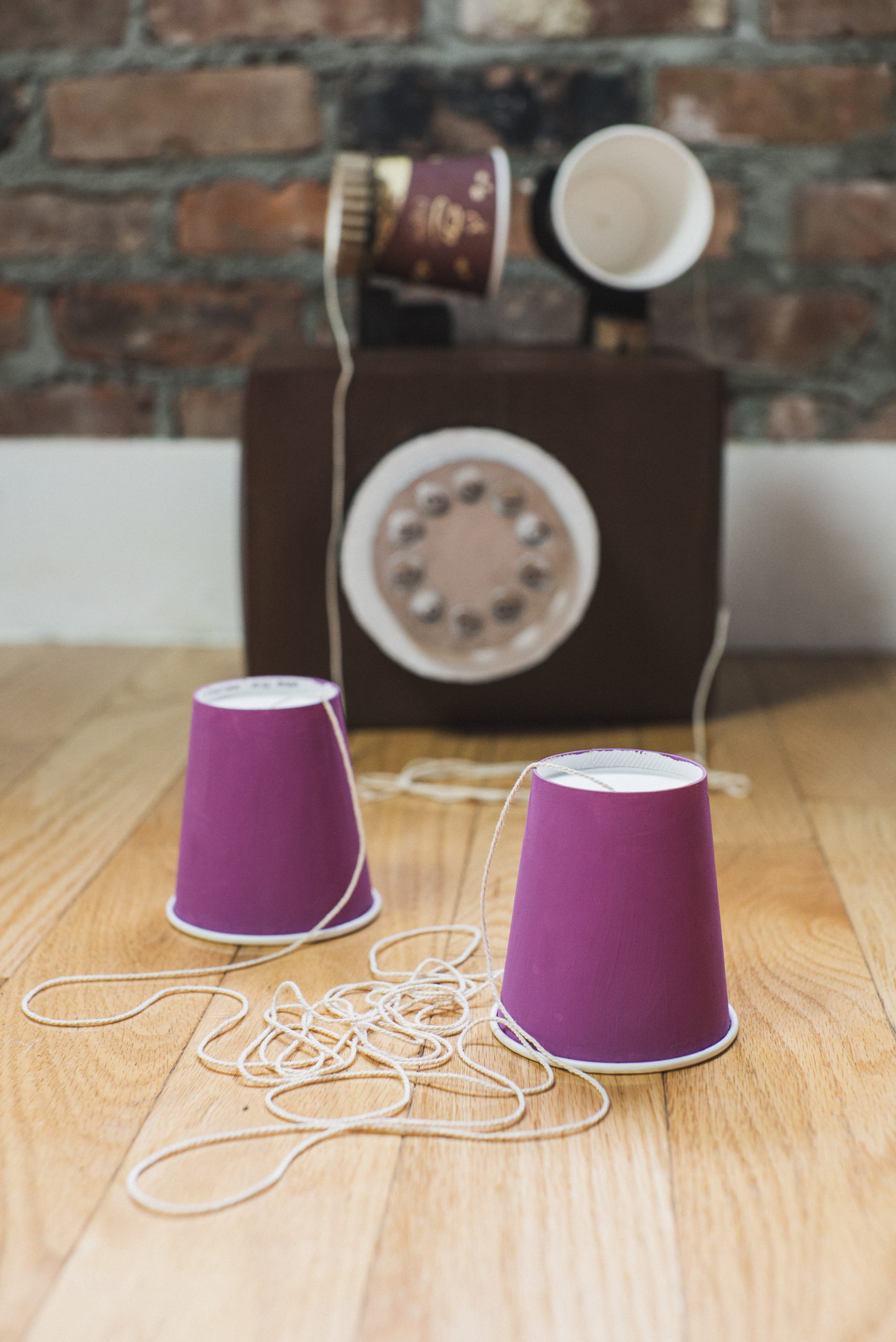Paper Cup Telephone
Paper Cup Telephone
- Activity Add-ons
- Activity Add-ons
Materials
- Two paper cups
- 20 feet of string or yarn
- Sharpened pencil or compass
- (Optional) Two paper clips
Instructions
- To make your child’s paper cup telephone, use the compass or the tip of a sharp pencil to poke a small hole at the bottom of each of the cups.
- Next, help your child thread the string through the hole of the first cup. Tie a knot in the yarn on the inside of the cup to keep it in place. Repeat this step on the second cup. If the string keeps slipping through the hole, you can tie it to a paper clip to help keep it in place.
- When using your paper cup phones, the string needs to be kept taut. When your child whispers into their cup, the person with the other cup to their ear should be able to hear their voice.
- Talk with your child about how this works. When you speak into the cup, the vibrations are transmitted to the string and travel through to the other cup if the string is held taut. The vibrations are transmitted to the air in the cup, which is around the listener’s ear, allowing the whisper to be heard.
- Because the cup and string are solid, and solids carry sound waves better than gasses such as air, the whisper can be heard much clearer than if you were to whisper into the air from that far away.
Paper Cup Telephone
- Activity Add-ons
- Activity Add-ons
Make STEM Connections
Communication devices master list.
You and your child each make a list of all the communication devices you can think of. Whoever has a longer list of items (without including any imaginary devices) wins! Do a Google search to research any items you didn’t have on your lists. Which devices communicate using sound?
Animals use echolocation.
Echolocation is the way some animals, such as dolphins and bats, use sound to navigate. Look into this ability online, read books about it at your local library, or watch a video.
Time machine.
Pick a couple of different periods in history and find out how people communicated. How has the ability to communicate in modern-day times changed the world.
Ride the waves on YouTube.
Watch videos with your child on YouTube about the different kinds of sound waves (mechanical and electromagnetic.) There are many educational videos available, such as the Crash Course Physics video on traveling waves.


